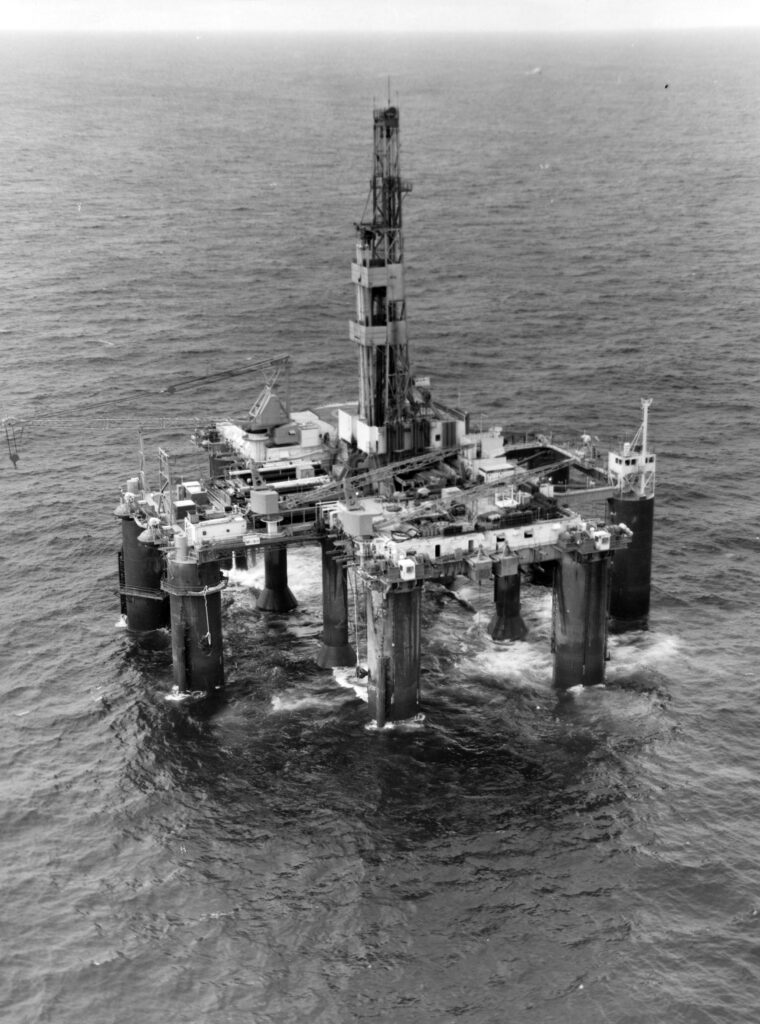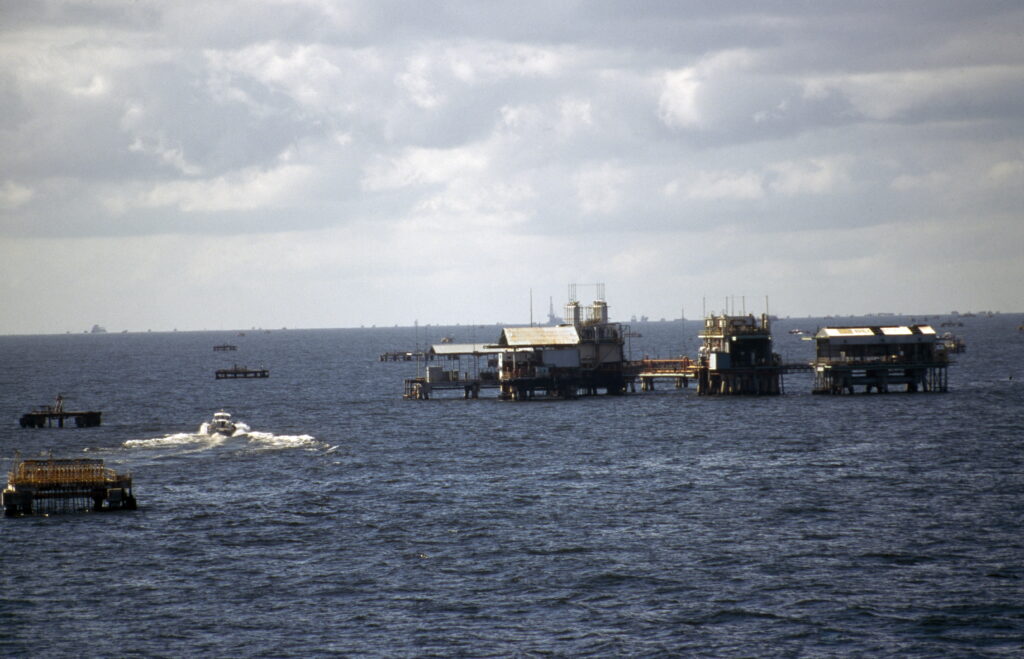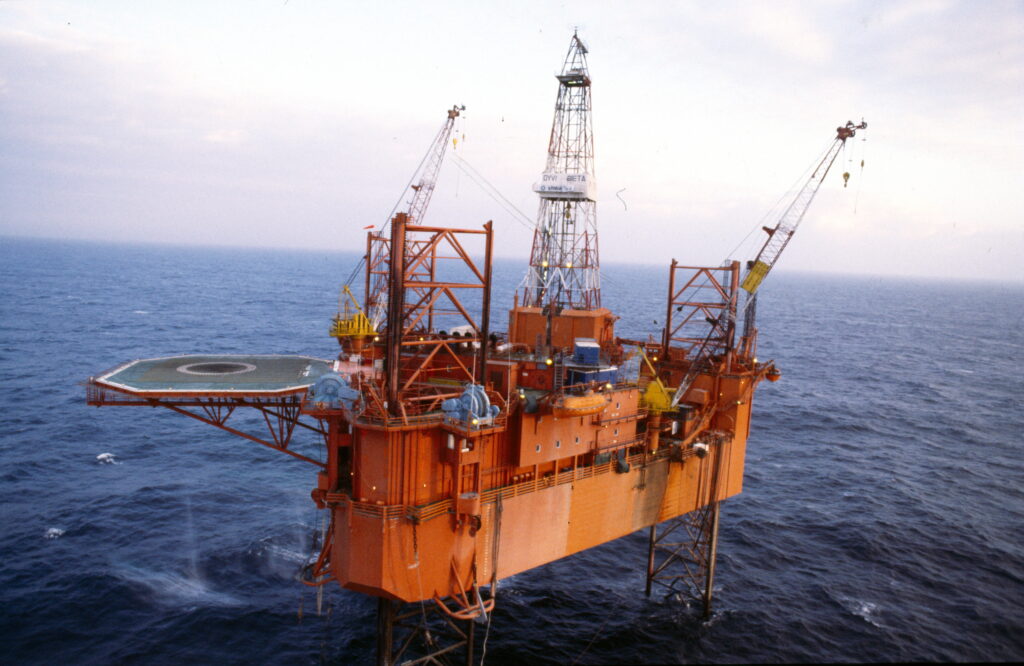Getting the oil hunt organised

Building up these departments progressed rapidly, driven by a desire to recruit qualified people and to train internal resources through both courses and practical experience. The first job for an oil and gas company which wants to identify resources is to assess where to look. That a job for geologists and geophysicists. Their work continues with an assessment of which prospects (potential opportunities to make discoveries) are most suitable for drilling. They then consider two main parameters – the possibility of finding something, and how much oil/gas might be found. Next comes the expensive bit – actually drilling a wildcat (initial exploration well on a prospect) to see whether the G&G assumptions are correct. That usually involves chartering and crewing a mobile drilling unit (rig). The work of carrying out such operations is known collectively as B&B.
Sub-surface organisation
The first generation of sub-surface managers in Statoil – covering both G&G and B&B – were largely recruited from abroad. Norwegians hired were often new graduates without experience from the oil industry. Agreements with such big foreign companies as Shell, Elf, Exxon and Mobil allowed newly recruited petroleum engineers at Statoil to participate in courses and to be seconded offshore in order to learn on the job.
A number of Statoil employees, for example, completed a training programme offered by Exxon in New Orleans, where they started at the bottom of the ladder as roustabouts – unskilled labourers – before advancing rapidly to the post of superintendent (the highest administrative rank on a field). Postings for such trainees were generally to Lafayette, Houston, Ventura and Midland, all key locations in North American oil production.[REMOVE]Fotnote: Status, vol 6, no 11, 12 & 18.

An exploration department was established fairly quickly in Statoil. This drew up guidance on where and how oil and gas would be sought as the company acquired a number of licence interests both as operator and partner. With operatorships in exploration licences, a number of prospect identified and a long-term charter for Ross Rig, the need also arose for an operational and competent organisation to conduct exploration drilling. This is potentially a highly risky business unless done properly and with the right equipment.
Statoil was operator for no less than 25 exploration wells between 1975 and 1979, drilled by six different rigs which operated simultaneously for periods of varying length. Ross Rig drilled 14, Norskald and Deepsea Saga three apiece, Dyvi Beta two, and Dyvi Gamma, Borgny Dolphin and Treasure Seeker one each. This called for a highly competent and adequately dimensioned organisation, which had to be built up in a short time and more or less from scratch. That was achieved in part by recruiting people from other parts of the world as well as through technical assistance from other companies with more experience.
Veterans with personality

The company’s first head of drilling and production was American Eugene Muhlenberger, who quit in 1975 to work in the Middle East. He was replaced by Mexican-American Jose Antonio Carlos Kauffmann de la Madrid (known as Joe), who could be said to have been a true oil baby. When he was an infant in 1930, an unsuspecting nanny had placed him on a red-hot oil pipeline which burnt his thigh. Later, Kauffmann experienced several oil incidents and was literally fire-branded by a blowout in Venezuela’s Lake Maracaibo, which left him hospitalised for a long time. Experience from such locations as Venezuela, Bolivia, Ecuador, Ethiopia, Cameroon, Texas and Iran meant the 45-year-old was well qualified to build up and head the operational part of Statoil’s drilling organisation.
The first phase involved doing the work with Esso as the technical operator and service provider, and then assistant, until Statoil was able to stand on its own feet.[REMOVE]Fotnote: A-Magasinet, 13 March 1976.
Over time, the first generation of foreign sub-surface managers was complemented with recruits from Statoil’s own ranks. Kauffmann undoubtedly contributed in many ways to this process, not least because – by his own account – he preferred technical work and was keen to delegate administrative assignments: “I’ve worked actively for three years to delegate authority, precisely in order to avoid unnecessary administrative centralisation,” he told Statoil’s house journal.[REMOVE]Fotnote: Status, vol 6, no 11/12.
By 1980, Kauffmann – then head of exploration and production – was the only foreigner left in the executive management team.[REMOVE]Fotnote: Annual report, 1979, Statoil.

Technical assistance offshore consisted largely of using hired consultants as drilling supervisors. These often had significantly more practical experience and know-how than formal education. Newly qualified and enthusiastic Norwegians who wanted to share their theoretical expertise could be met with a cold shoulder and a biting comment – but also with a twinkle in the eye. One example was provided by Jack Pillow, the hired supervisor on Dyvi Beta. An attempt to explain the d-exponent, used in calculating sub-surface pore pressure, was met with: “I don’t believe in the fucking d-exponent”.[REMOVE]Fotnote: Roald Riise in conversation with Björn Lindberg, 20 May 2021.
Pillow was described as a “loud, hard-living … Bourbon-drinking, steak-eating cigar-smoking, tobacco-chewing, rough and tough Texan”. New Norwegian recruits undoubtedly experienced the change from classroom to offshore as a big step in every respect.[REMOVE]Fotnote: Evans, Jack, 2016, Diamonds for rice, Matador.
Nevertheless, a good mix of theoretical analysis, experience and “listening to the well” was undoubtedly needed to complete the job – although this was not always without drama. Today’s veterans, who were then young and newly graduated, recall a fantastic time where they participated in an important phase of Statoil’s early history and rapidly gained great authority.
Combining theoretical background, drive and responsibility with practical experience and know-how is seen as an important factor in creating Statoil’s “DNA”. And these young graduates went on in many cases to become key personnel in both specialist jobs and as offshore installation managers, operations managers, vice presidents and so forth.
With the appointment of Anders Opedal as Equinor’s CEO in 2020, the group also acquired its first chief executive with a technical background – he was educated as a petroleum engineer.
From 1975 to 1979 Statoil was operator for 25 exploration wells: Ross Rig – 14 wells, Dyvi Gamma -1, Borgny Dolphin -1, Treasure Seeker -1, Dyvi Beta -2, Norskald -3, Deepsea Saga -3
arrow_backPublic affairs department in key positionLittle gender equality in the 1970sarrow_forward